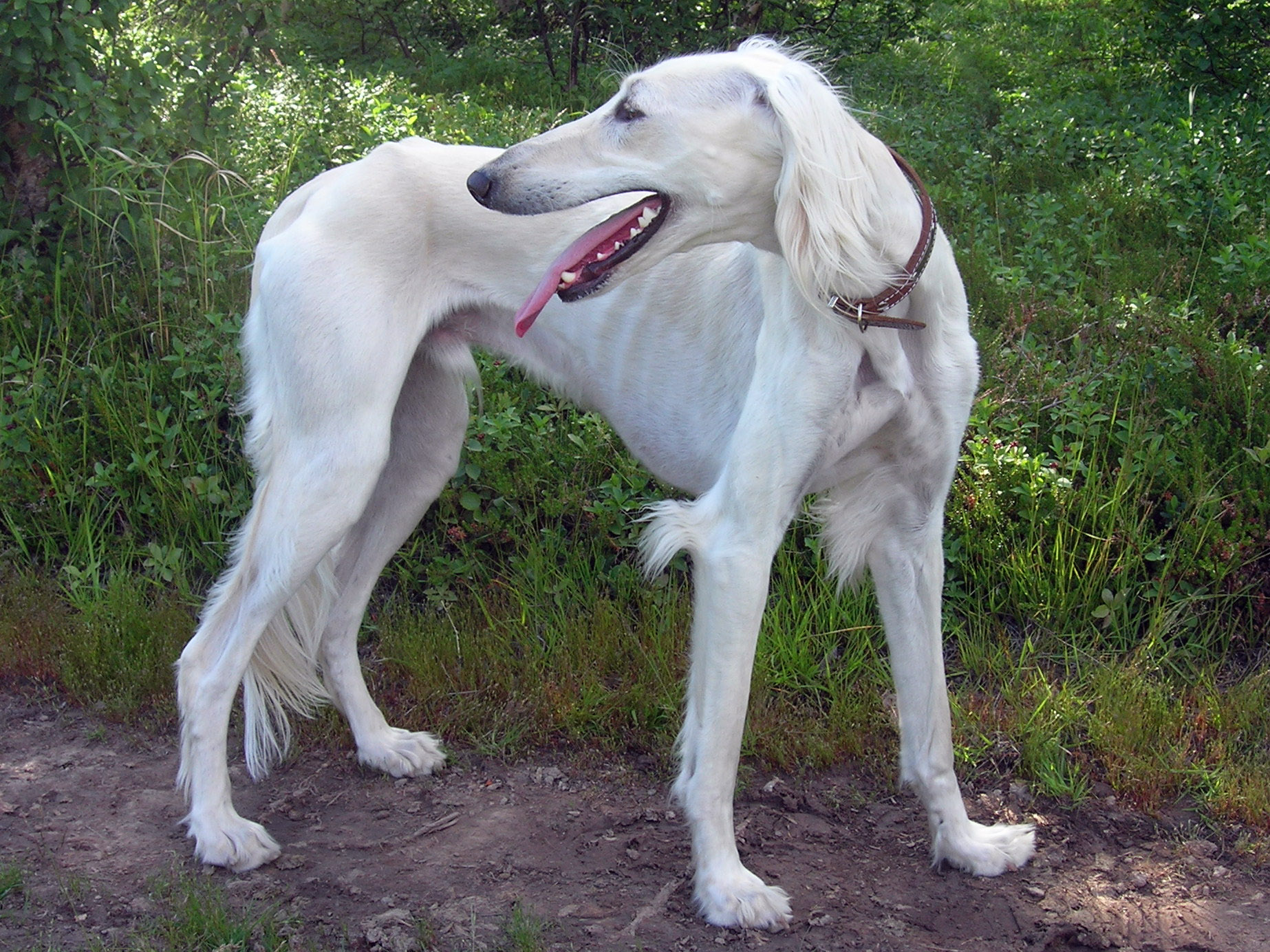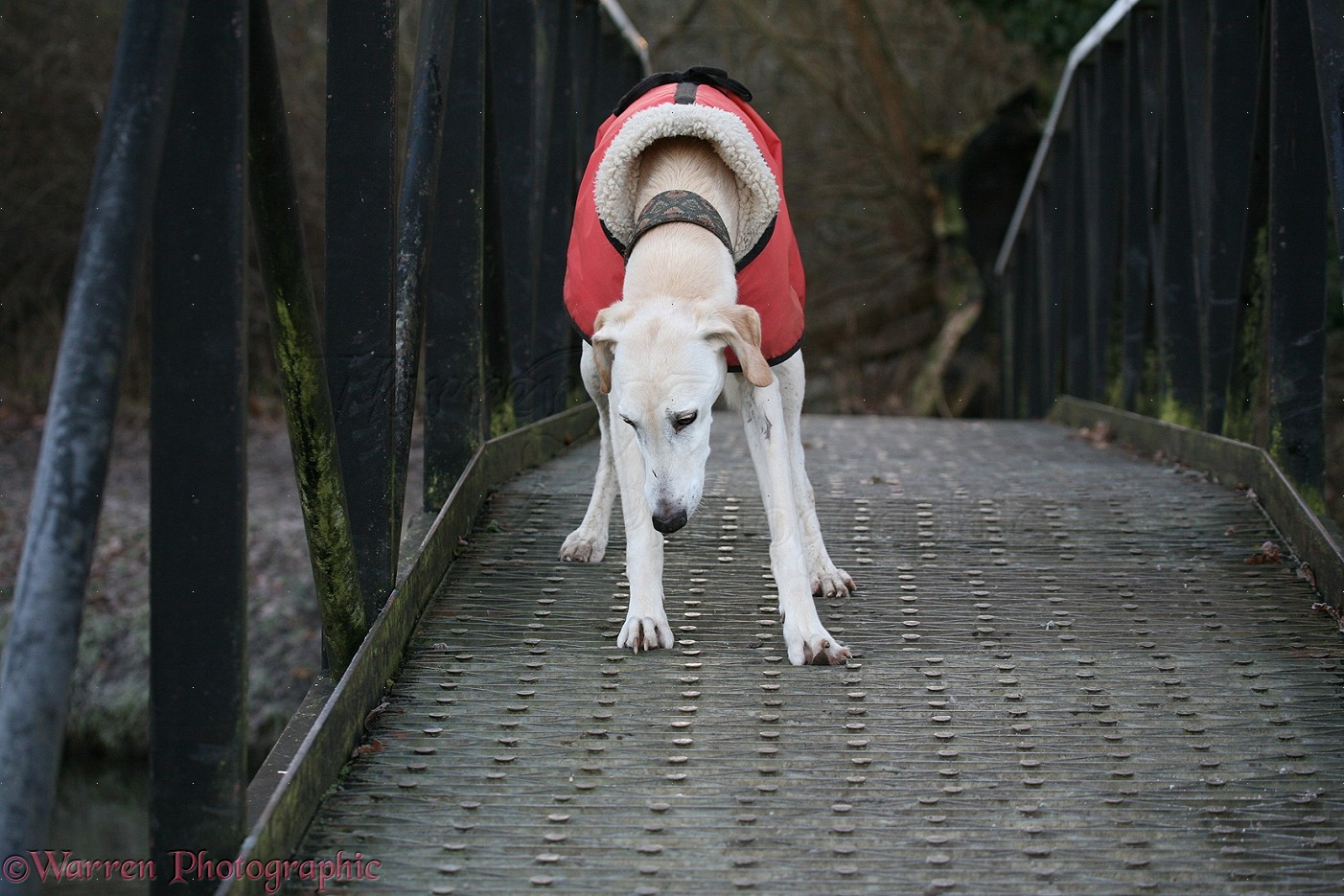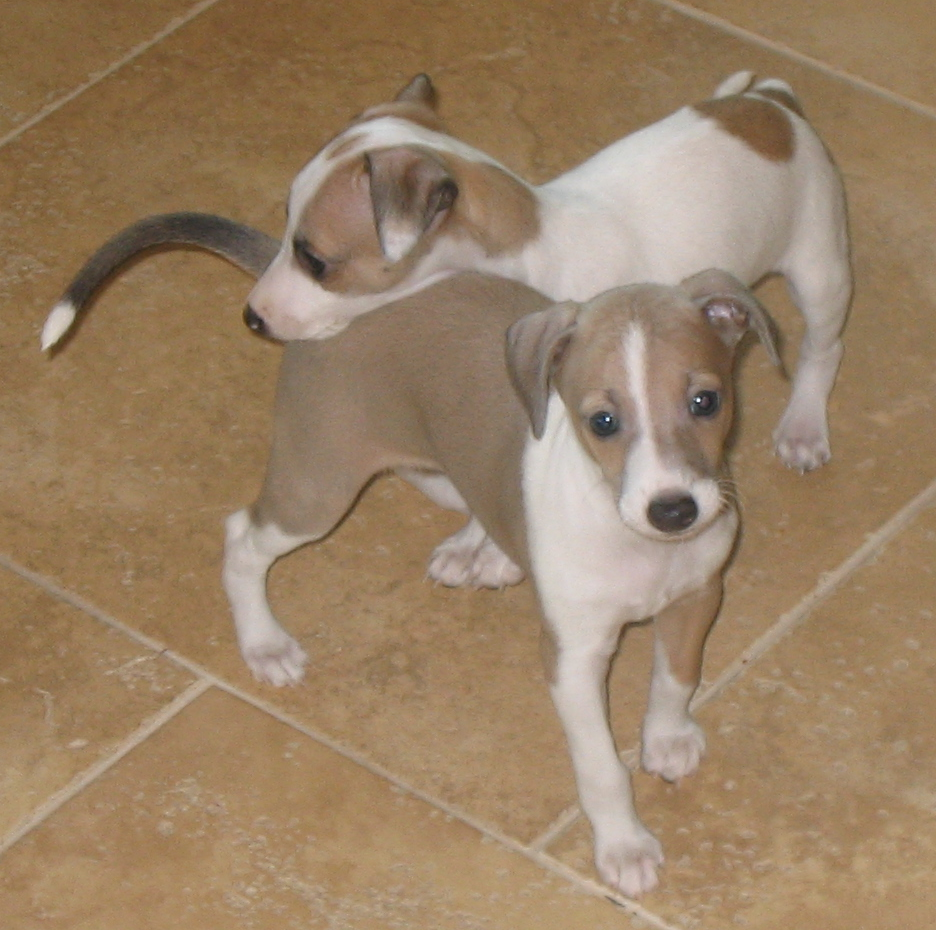
Saluki dog
Saluki is a breed of dog - large elegant and beautiful dog, Saluki dog is dog for hunting. Saluki dog breed is flexible and well muscled.
Saluki - dog rulers of Egypt, probably the oldest breed of domesticated dogs, some historians identify it as "a special breed and type, known since 329 BC. er. when Alexander of Macedon conquered India. "
This breed is considered on an equal age of the earliest known civilizations. This assertion is based on the fact that hunting dogs, which can be seen at the ancient carvings, much more like the Saluki, than any other breed: they have a body with a Greyhound "burqa" in the ears and feathering on the tail and limbs. Exactly the same hound is depicted on Egyptian tombs of 2100 BC. er. and more recent excavations of the ancient Sumerian empire, which belongs to the 7000 - 6000 years BC. er. discovered carvings dogs strikingly similar to the Saluki.
Claim that "when you meet in the Bible the word" dog "- it means a Saluki." Although the Mohammedan religion considers dogs "unclean" animals, the Muslims declared holy Saluki dog and called it "noble" given them by God for fun and in "good". It allows Muslims to eat meat, obtained with its help in hunting.
Saluki was the only dog ??which was allowed to sleep on the carpet in the tent of the sheikh. These dogs are prized so highly, that after death their bodies are often embalmed as a body themselves pharaohs. Therefore, in the ancient tombs of the Upper Nile have been discovered the remains of numerous dogs.
As residents of the desert nomadic lifestyle, home to Saluki was the entire region from the Caspian Sea to the Sahara, including Egypt, Arabia, Palestine, Syria, Mesopotamia, Anatolia and Persia.
Naturally, in such a vast region of dog differ somewhat from each other - mostly on the growth and wool. Therefore, the Arabian Saluki smaller than the Persian variety, and has a less pronounced feathering on the legs and ears.
Three Salukis were first brought to England in 1840 - these were: female, owned by Sir Hamilton Smith, male, living in the Zoo Regent's Park, and the dog, which belonged to the Duke of Devonshire in Chasuorte. Then they were known as the Persian Greyhound, since all three dogs came from Persia

Saluki dog
White Saluki running dog on the track
However, this interest has emerged since then as the Reverend Florence Amherst in 1895 brought the first Arab Saluki of the Nursery Prince Abdullah in Trans-Jordan.
England later learned more about the Salukis to their troops, visited the East during the First World War. They brought the dogs home as war trophies or gifts from a friendly-minded tribes.
Because of the extraordinary agility Salukis were used primarily by Arabs in order to drive the gazelle, the fastest of the antelopes. Preserved records that cops went out hunting on horseback with falcons on the sleeve and the Salukis on a leash. It is believed that these dogs were also used to hunt jackals, foxes and hares. Published in 1852 engraving depicts the hunting of wild boar in Algeria, with the active participation of the Saluki.
In England, these dogs are widely used in the hare, and regular competitions where judges take into account the dog's ability to make quick turns and in the shortest time to catch the hare. Saluki mainly hunts "on-sighted", although it has a great flair.
In England and the continent are very popular sports races of these dogs on a special track, with a mechanical hare and obstacles.
Saluki different sharp-eyed, and often wake up in her ancient instincts - • She loves to lie on the sand and watching an eagle soaring in the sky, not paying any attention to this tea. Dog-Saluki Sharon Dhol soon after his arrival in America hunted the fox for a few seconds after it said its prey.
At home, in the steppes, this dog is not spoiled. She lives in harsh conditions, where survival of the best fit, which is why she has such a strong constitution and the constitution, allowing withstand any climate in the unheated kennels. Paws at the Saluki solid and strong, and well-protected fur between the toes. How much would a dog or ran on a very rocky ground, she never hurt paws or fingers
Its beauty is like a thoroughbred horse: the same grace and harmony of forms, chiseled and elegant lines. By its nature, a Saluki is very attached to his master, though not showing his tender feelings. It's a good guard dog, but not aggressive.
Saluki was already well known in England long before it appeared in the United States. American Kennel Club officially recognized the breed only in 1927.
Saluki. Official Standard
The head is long and narrow, skull moderately wide between the ears, flat, transition from forehead to muzzle is not expressed. Nose black or liver. Ears are long, covered with long silky hair, hanging along the skull, moving. Eyes from dark to hazel, with intelligent expression, large and oval, but not protruding. Teeth are strong, straight bite.
Neck long, flexible, well muscled. Chest deep and moderately narrow.
Forequarters. Vanes sloping, muscular but not coarse. Legs straight and long.
Hindquarters strong, the iliac wide apart, the angle of the knee joint is moderate. Hocks are low, indicating that the strength of the canter and jump

Saluki dog
Elegant Saluki dog on the beach
Back and loin. The Saluki dog back is fairly broad, slightly arched loin.
Feet medium length, long fingers and arched, not splayed, but not "cat" (round). Feet strong and flexible, with thick fur between the toes. Tail long, set low, with a natural curve, the lower surface is covered with abundant long silky (but not shaggy) hair, which forms the suspension.
The Saluki dog coat is short and tight, smooth, soft and silky to the touch. The limbs are small tow, on the back of the thighs. Sometimes slightly wavy, and long on the shoulders and hips.
Color white, cream, fawn (tan), gold, red, roan and tan, tricolor (white with black & tan-lym), and black and tan.

Saluki dog
General view. In general, this breed should give the impression of grace and harmony of addition, speed and endurance coupled with strength and energy Saluki dog, allowing overtaking gazelles or other prey, chasing her through deep sand or rocky mountains. Expression of the eyes should be gentle and dignified, with a serious, devoted and watchful eye Saluki dog.
Height: Males - 58 - 71 cm, females may be much smaller (typical for the breed).
Smooth variety. The same standard, except for the coat, which has no decorating hair
Feet medium length, long fingers and arched, not splayed, but not "cat" (round). Feet strong and flexible, with thick fur between the toes. Tail long, set low, with a natural curve, the lower surface is covered with abundant long silky (but not shaggy) hair, which forms the suspension.
The Saluki dog coat is short and tight, smooth, soft and silky to the touch. The limbs are small tow, on the back of the thighs. Sometimes slightly wavy, and long on the shoulders and hips.
Color white, cream, fawn (tan), gold, red, roan and tan, tricolor (white with black & tan-lym), and black and tan.

Saluki dog
General view. In general, this breed should give the impression of grace and harmony of addition, speed and endurance coupled with strength and energy Saluki dog, allowing overtaking gazelles or other prey, chasing her through deep sand or rocky mountains. Expression of the eyes should be gentle and dignified, with a serious, devoted and watchful eye Saluki dog.
Height: Males - 58 - 71 cm, females may be much smaller (typical for the breed).
Smooth variety. The same standard, except for the coat, which has no decorating hair


























